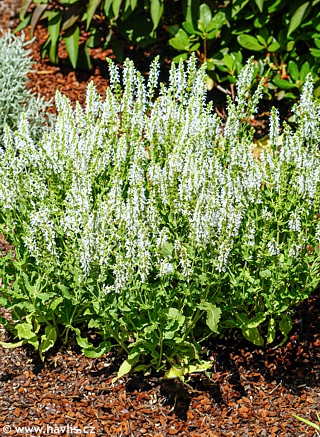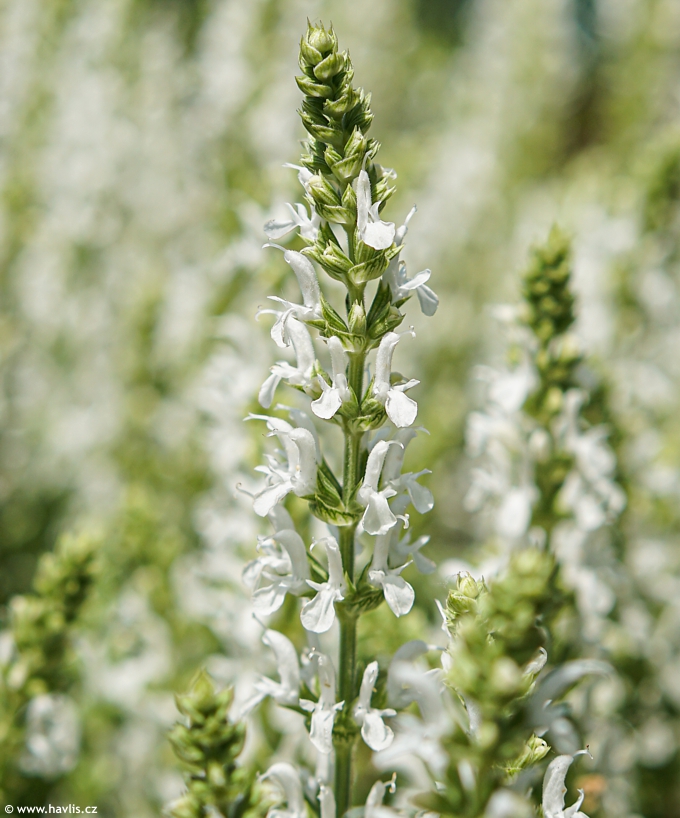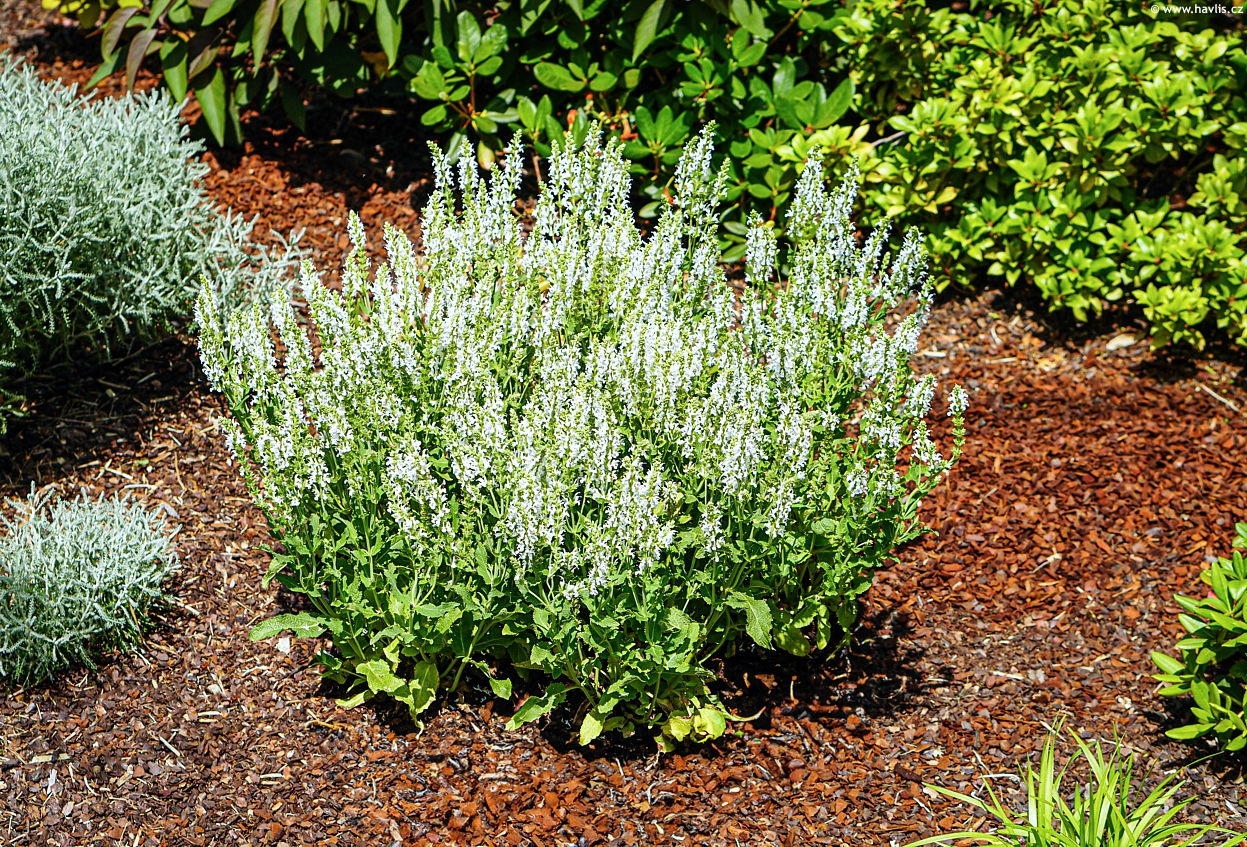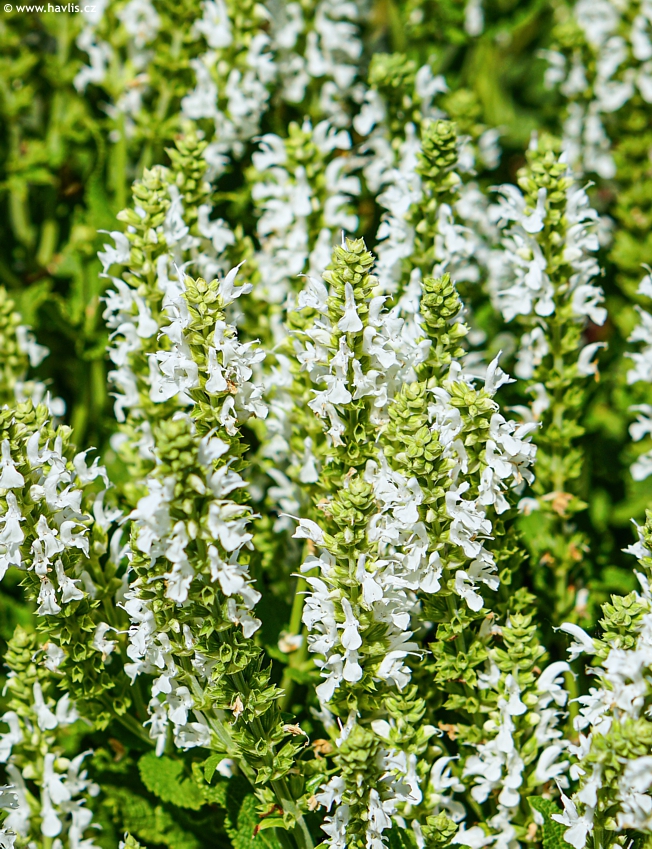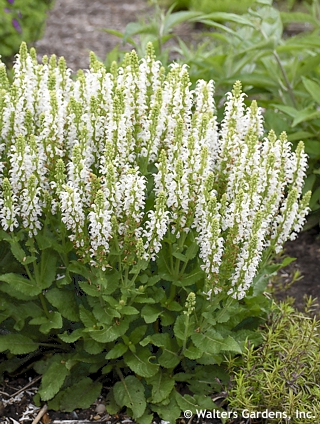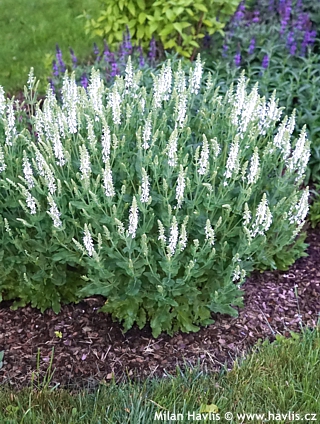Salvia nemorosa 'SCHNEEHÜGEL' wood sage
size/type
low perennial,low perennial
usual height
0,2-0,4m
usual width
0,3-0,4m
leaves
semi-deciduous broadleaf
colour of leaves
flowers
showy
colour of flowers
blooming time
May-July
location
full to partial sun
soil type
any (acidic to alkaline)
soil moisture requirements
evenly moist but well-drained
USDA zone (lowest)
4 (down to -34°C)
winter protection
for zone 5+6

for zone 7

categorized
Salvia
Salvia is a large genus, containing about 900 species. In our climate mostly common (evergreen) sage is grown for culinary uses. Also, very popular are those of subtropical origin that are used here as annuals with long flowering season, especially in public areas. We concentrate on herbaceous perennials which are not widely cultivated and we believe that there are species, hybrids, and varieties worth the job.Description of the plant:
Schneehügel means 'A Heap of Snow' and this German wood sage variety is exactly what the name suggests. A small and compact variety of wood sage, whose stems usually do not exceed 40 cm in height and a single plant is about the same width. It truly looks like a small pile of snow slowly thawing in a garden bed in spring sun. Tiny, white flowers are arranged along upright stems in spike-like inflorescence and bloom from May to July. Leaves are lanceolate, coarse, medium green, and aromatic. They are not edible. Schneehügel forms dense clumps and requires no care. Though if you want to keep it beautiful for as long as possible, after the main flowering period cut it back to the ground and let it regrown into a new clump with nice, healthy leaves and a few new flowers.Sage will grow in almost any well-drained soil. For best results grow it in light, humus-rich, well-drained soil in full sun or light shade. It needs no fertilizing, only in very poor or compacted soils it will benefit from occasional feeding with a balanced fertilizer. In early spring remove all above-ground parts except for rosette of new or over-wintered, healthy leaves lying flat on the ground. It is perfectly hardy to about -34°C (USDA zone 4) and will grow in outdoor pots and throws, too.
Last update 21-06-2023
QUICK PRICE OVERVIEW
CURRENTLY SOLD OUT












